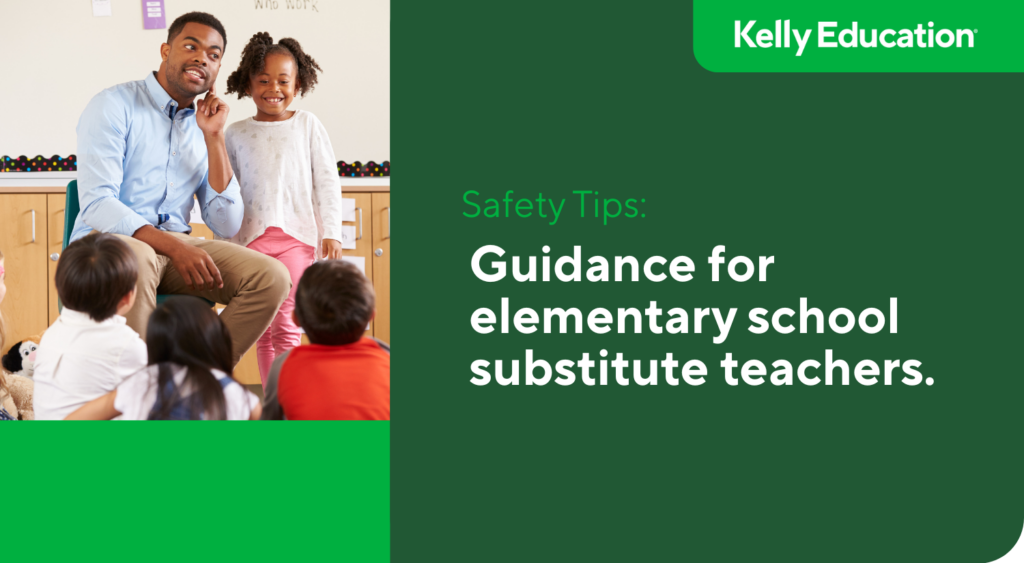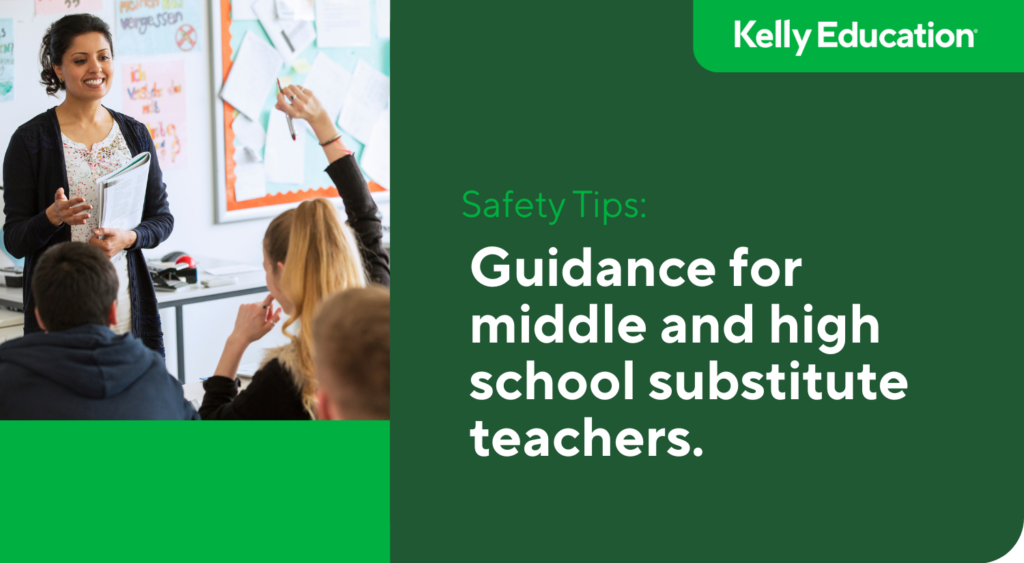Tips when substitute teaching for a science teacher.

Substitute teaching is always packed with surprises. From freshman gym class to painting with kindergartners, working as a substitute teacher provides an opportunity to do something new every day. Today, you’ve accepted an assignment substitute teach for science teacher.
You may not recall much about the periodic table of elements, photosynthesis, or planetary nebula, but that’s okay. We’ll put a substitute teacher for science class under a microscope—and provide a few tips to get you through the day with confidence!
The basics.
As with any substitute teaching assignment, giving yourself at least 30 extra minutes allows you to not stress about traffic on the way to school. Once there, you’ll have time to ask a few questions in the office, find the classroom, and review lesson plans.
Science teachers typically leave a detailed plan explaining the students’ focus for the day. Sometimes, you’ll show up midweek during a project. Other times, students may be working on an extension of the material from the day before. Arriving early to understand the material will help you feel prepared and confident.
Introduce yourself to your students to create a welcoming environment, set expectations, and get into lesson plans. Be sure to stick with the seating chart to avoid disruptions.
Tips for executing a science teacher’s lesson plan.
Research lesson objectives.
What you learned in biology and astronomy when you were in school may not be so fresh in your mind. Don’t worry. Even if you’re unfamiliar with a topic, you can still facilitate this class.
A quick online search will refresh your memory and give you basic knowledge. If you have enough time, try to complete the assignment yourself and crosscheck online. As you work on the assignment, keep its purpose in mind and what key takeaways the science teacher hopes to convey to students.
Explain the assignment.
Introduce the objectives and focus for the day. Before students start their work, answer any questions to ensure they understand their task. Everyone has different learning styles. Some students might be visual learners, while others may learn by doing. That said, tailor your instructions to meet the abilities and needs of all students.
Stay engaged during class.
Remaining present and engaged can prevent distractions and help students finish their work on time. As students work, walk around the classroom, answer any questions, and help them stay on task.
Students are often one of the greatest resources in the classroom. If you’re not a science expert, let the students work in pairs, consult their textbooks, or use online resources (if allowed).
Review and reflect.
Save time to review class material together. Once students have completed their work, ask if anyone would like to share their findings. That way, those who understand the lesson can explain their reasoning and clarify any questions other students may have.
Make the most out of class.
As science class nears its end, close the class period with a smile and thank the students for their hard work. After classes, leave a detailed note explaining how the day went, any absences, and anything else the teacher should know for when they return.
Substitute teaching without a lesson plan.
While teachers often leave detailed plans for your day, there are times when emergencies arise. Always come with an open mindset and prepare for the unexpected. Your approach will typically differ if you’re the science teacher for the day or filling in for the week or longer. We’ll leave you with some lesson plan ideas for substitute teaching in science class.
Elementary school.
Keep things simple with younger students. “Birthday Season” is an activity about the four seasons. Here’s what to do:
- Draw pictures of each season’s weather or elements–snow for winter, rain for spring, sunshine for summer, and wind or foliage for fall.
- Let students create a name tag and stick it to the season that matches their birthday.
- Prolong the lesson by asking each student questions about their birthday season, such as the type of weather and their favorite parts of the season.
- For higher elementary students, cover seasonal events, like migration, hurricanes, and snowstorms.
Middle school.
In middle school, science class focuses on topics such as the Earth’s layers, the universe, and the scientific method. Instead of creating a lesson plan, a good approach may be to reinforce what students have already learned. Ask students about their previous assignments for the week and write a song with the class. This is not only a fun way to keep them engaged, but also helps students review their content and work together to create a masterpiece.
Start class with writing a prompt for a quick journal entry. Write the prompt on the board–something regarding a science topic and ask them to include a drawing. This will take their minds off the class before and allow them to shift focus while settling in. You could allow students to present it to the class to fill up the day.
Sample journal: Imagine you’re a plant, and your job is to perform photosynthesis. Write a journal entry from the plant’s point of view, explaining what photosynthesis is, why it’s important, and how it helps you survive. Be sure to include how sunlight, water, and carbon dioxide work together to help you make food.
Example questions to consider:
- What do you feel when sunlight hits your leaves?
- How do you take in water and carbon dioxide?
- Why is photosynthesis important not only for you, but also for other living things?
High school.
If you’re stepping out of your comfort zone, creating a high school science class lesson plan can seem daunting. At this point, students are learning about biology, chemistry, physics–and you might not be up to speed. Again, reinforcing what students have already covered is a good game plan.
Keep students engaged and learning by creating a crossword puzzle. Have students use graph paper to create a crossword puzzle about current class topics. If there’s time (or you’re in for the next day), students can swap and solve their puzzles.
Remember that when substitute teaching for science class, you should not be doing labs. You should also not allow students to access any lab equipment. You are not trained to work in a science environment with chemicals, sharp objects, or flames. If the lesson plan calls for it, engage an administrator.
Become a substitute teacher with Kelly Education.
While taking on substitute teacher jobs for unfamiliar subjects can be a little unsettling, following our tips can prepare you to conquer the day. Everything may not go as planned, but keeping a positive attitude and assisting students however you can is essential. Kelly Education has a library of substitute teaching advice so you can confidently lead your class. Check these out:
- substitute teacher dress codes
- what to bring on your first day
- how to introduce yourself to the class
Thinking about becoming a substitute teacher? Fill out our brief interest form and one of our recruiters will contact you to answer your questions and share more about opportunities to become a substitute teacher with one of our school district partners.
View Related: Article Workplace culture
You might like
Find your next job
Discover thousands of temporary, full-time, and remote jobs for beginning and experienced job seekers.



